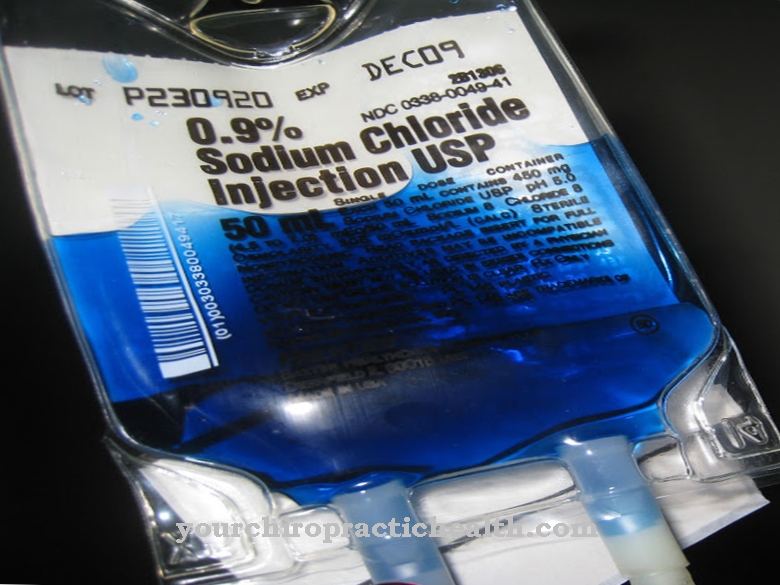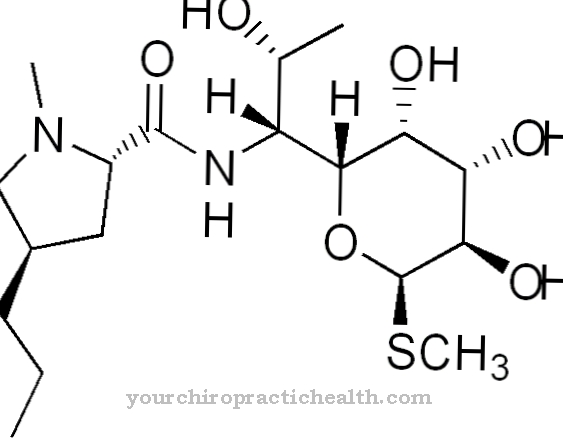Paroxetine is an antidepressant medicinal substance that belongs to the group of selective serotonin reuptake inhibitors. The substance is used to treat mental illnesses such as anxiety disorders, depression or post-traumatic stress disorders. The active ingredient was developed by the English pharmaceutical company GlaxoSmithKline based in London.
What is Paroxetine?
Paroxetine is a highly effective drug from the group of selective serotonin reuptake inhibitors (SSRI). The substance was developed by the English pharmaceutical company GlaxoSmithKline based in London. In Germany and numerous other member states of the European Union, paroxetine is subject to prescription and pharmacy requirements. It is therefore not freely available and can only be taken after a doctor's prescription.
Due to its specific mode of action, paroxetine belongs to the class of antidepressants. Depression is not the only application of the drug, however. Paroxetine is also used to fight other mental illnesses such as anxiety disorders, obsessive-compulsive disorder, and post-traumatic stress disorder, as well as fibromyalgia.
The white to yellowish-white substance has a moral mass of 329.37 g / mol and is described in chemistry with the empirical formula C 19 - H 20 - F - N - O 3.
Pharmacological effect
Paroxetine is one of the selective serotonin reuptake inhibitors (SRRIs).Accordingly, the effect is due to the influence on the serotonin system in the human brain. Serotonin is an important neurotransmitter that transports certain information through the dynamic gap in the brain.
Serotonin is u. a. responsible for the control of mood and mind. According to numerous studies, a high serotonin content creates a feeling of serenity, contentment and happiness. At the same time, the potential for aggression is reduced and negative emotions such as grief are suppressed.
People with depression often have a particularly low serotonin level, which is seen as a (co-) cause of their upset. SSRIs like paroxetine cause an increased release of serotonin in the brain after ingestion. This leads to an increased concentration of the neurotransmitter in the synaptic gap.
At the same time, because of the paroxetin, there is a down-regulation of those substances that are responsible for the breakdown of serotonin. The breakdown of serotonin is also inhibited. Further information that would explain the exact pharmacological effect of the substance on the body is not yet known.
Clinical studies have shown, however, that during the first three months of pregnancy there can be an increased risk of congenital malformations (especially in the cardiovascular system). Since the active ingredient gets into breast milk in small amounts, breastfeeding should not be carried out during or shortly after treatment with paroxetine.
Medical application & use
Paroxetine is usually prescribed in tablet form. These are taken orally to combat mental illness or to alleviate its effects. An indication exists in particular for severe depressive illnesses, obsessive-compulsive disorder, generalized anxiety disorders, social phobias, panic disorders (e.g. the fear of leaving the house or entering shops) and post-traumatic stress disorders (often also called PTSD or PTSD).
Due to the increased serotonin concentration in the brain caused by parexotin, the symptoms of these diseases should be eliminated or at least weakened. The exact amount of paroxetine a patient needs to consume for treatment varies depending on the disease being treated. Usually, however, it ranges between 20 and 50 mg of the active ingredient.
Paroxetine and other SRRIs are usually not used in children or adolescents under the age of 18, but only in adults. In exceptional cases, however, a prescription is also given to minors.
You can find your medication here
➔ Medicines to calm down and strengthen nervesRisks & side effects
Paroxetine can also lead to undesirable side effects. Extensive tests have shown that in one to ten patients out of a total of 100 (often) loss of appetite, drowsiness, insomnia, tension, dizziness, general feelings of weakness, weight gain, sensory disturbances, profuse sweating, sleep disorders, headaches and gastrointestinal disorders (including diarrhea, dry mouth, vomiting and constipation) occurred.
Occasionally (in one to ten patients in 1,000) there was also abnormal bleeding on the skin and mucous membranes, hallucinations, dilatation of the pupils, motor restlessness, fluctuations in feelings, strong heart palpitations, a drop in blood pressure or its rise, rash and itching.
In rare cases (in one to ten patients in 10,000), manic reactions, depersonalization, panic attacks and an increase in liver enzyme values can occur. Furthermore, there may be photosensitivity, severe skin rashes, a slow pulse or the development of a serotonin syndrome (symptom complex of motor restlessness, confusion, sweating and possibly hallucinations).
There may be a contraindication in individual cases. This is the case when a medical contraindication makes treatment with the drug appear to be absolutely not feasible. Hypersensitivity to the active ingredient paroxetine is a contraindication. There is also a contraindication if MAO inhibitors (drugs that inhibit the body's own enzyme monoamine oxidase) or thioridazine are taken at the same time. Because in these cases there can be unpredictable interactions. The attending physician must therefore be informed about the use of other medications.

















.jpg)







.jpg)


